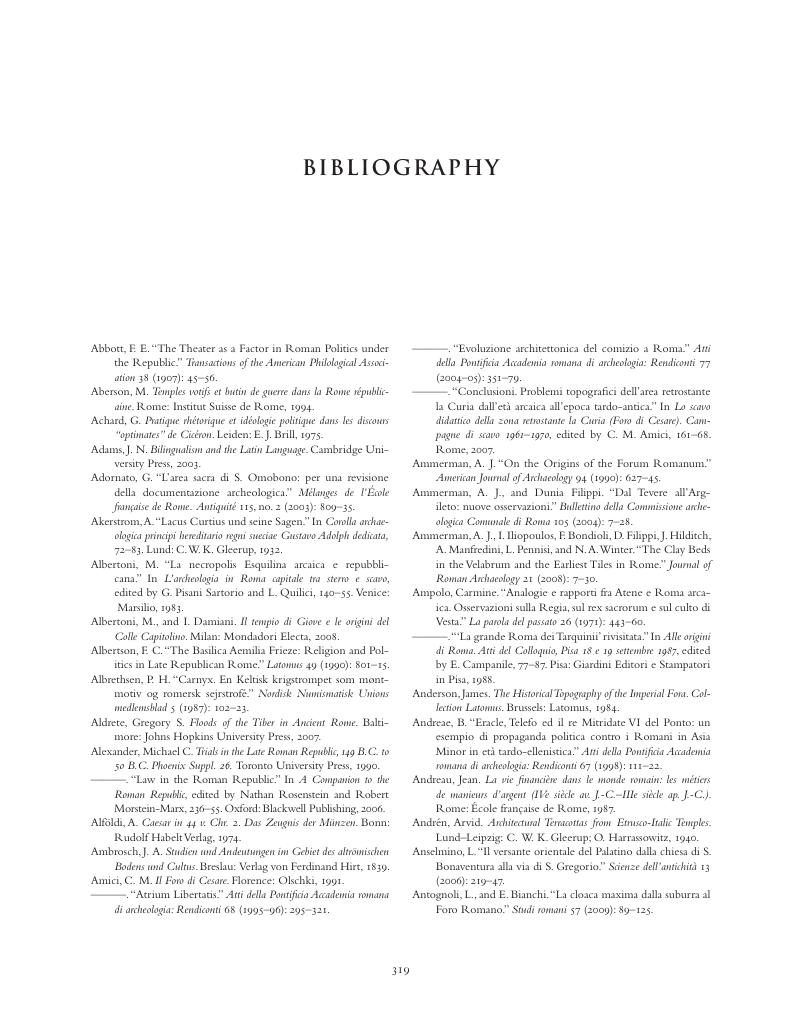Book contents
- Architecture and Politics in Republican Rome
- Architecture and Politics in Republican Rome
- Copyright page
- Dedication
- Dedication
- Contents
- Acknowledgements
- Introduction
- One A Republic Takes Shape
- Two An Age of Individualism
- Three A State of Fear, and New Horizons
- Four Turmoil and Tension
- Five Civil War and Aftermath
- Six Pompey, Caesar, and Rivals
- Seven Caesar, Pompey, and Rivals
- Notes
- Bibliography
- Index
- References
Bibliography
Published online by Cambridge University Press: 21 September 2017
- Architecture and Politics in Republican Rome
- Architecture and Politics in Republican Rome
- Copyright page
- Dedication
- Dedication
- Contents
- Acknowledgements
- Introduction
- One A Republic Takes Shape
- Two An Age of Individualism
- Three A State of Fear, and New Horizons
- Four Turmoil and Tension
- Five Civil War and Aftermath
- Six Pompey, Caesar, and Rivals
- Seven Caesar, Pompey, and Rivals
- Notes
- Bibliography
- Index
- References
Summary

- Type
- Chapter
- Information
- Architecture and Politics in Republican Rome , pp. 276 - 318Publisher: Cambridge University PressPrint publication year: 2017



